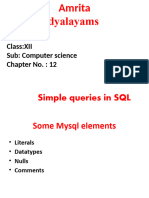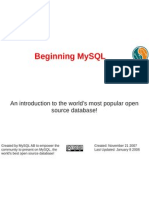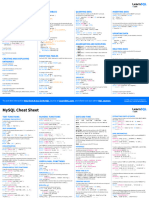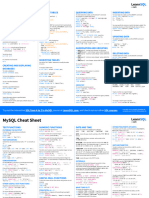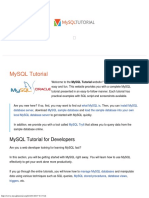0% found this document useful (0 votes)
5 views48 pages0 MySQL
The document provides an introduction to MySQL, covering its features, basic queries, and database management. It explains how to connect to MySQL, create databases and tables, and perform various SQL operations such as selecting, inserting, and deleting data. Additionally, it includes examples of SQL commands and emphasizes the use of SQL for database interactions.
Uploaded by
jadonakash7470Copyright
© © All Rights Reserved
We take content rights seriously. If you suspect this is your content, claim it here.
Available Formats
Download as PPT, PDF, TXT or read online on Scribd
0% found this document useful (0 votes)
5 views48 pages0 MySQL
The document provides an introduction to MySQL, covering its features, basic queries, and database management. It explains how to connect to MySQL, create databases and tables, and perform various SQL operations such as selecting, inserting, and deleting data. Additionally, it includes examples of SQL commands and emphasizes the use of SQL for database interactions.
Uploaded by
jadonakash7470Copyright
© © All Rights Reserved
We take content rights seriously. If you suspect this is your content, claim it here.
Available Formats
Download as PPT, PDF, TXT or read online on Scribd
/ 48


















